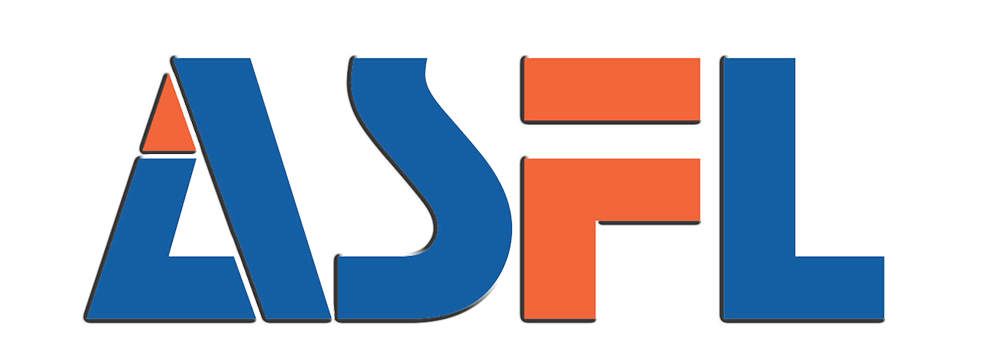Core Functionality of the Water Filling Machine
Precision Control Through Filling Nozzles and Valves
Today's water filling equipment can hit around 0.5% accuracy thanks to smart nozzles controlled by microprocessors and valves driven by servos. The machinery adjusts flow between roughly 200 milliliters and 5 liters every second, changing on the fly as different bottle designs pass through the line. Top tier systems have built in sensors that detect pressure changes, keeping fill levels steady whether dealing with plastic PET bottles, glass containers, or those meant for reuse. This means operators don't need to constantly check and adjust settings manually, which saves time and reduces errors in production runs.
Multi-Head Automatic Filling Systems for High Output
Rotary filling systems come with anywhere from 12 to 48 nozzles and can handle well over 40 thousand bottles per hour all while keeping things pretty accurate. The numbers get even better when looking at specific configurations. According to recent industry reports from last year, those with 16 heads cut down on changeover time by about 30 percent compared to traditional linear arrangements. For food and beverage producers concerned about compliance, most systems now feature stainless steel parts where they touch products. Many also incorporate Clean-in-Place technology which makes cleaning much easier between batches, especially important for facilities running non-stop production lines day after day.
High-Precision Anti-Foaming Technology for Consistent Fill Quality
Advanced vacuum degassing modules remove 99.8% of dissolved air before filling, preventing foam formation and underfills. Ultrasonic sensors detect residual bubbles at 0.2 mm resolution, triggering automatic compensation cycles. This technology reduces annual product waste by 12–18% in large-scale plants and ensures uniform fill levels for both carbonated and still water varieties.
Integrated Workflow: From Bottle Rinsing to Capping and Labeling
Bottle Rinsing Unit: Ensuring Contamination-Free Containers
High-pressure air jets and sanitizing sprays eliminate particulates and microorganisms from bottles prior to filling. Optimized dwell times and nozzle placement enable 99.9% sterilization efficacy, supporting compliance with food safety regulations and minimizing contamination risks in sensitive beverage applications.
Filling Unit: Core Stage With Advanced Water Filling Machine Techniques
Contemporary water filling machines utilize volumetric measurement systems with ±0.5% accuracy, validated in beverage production automation research. Integrated designs allow output exceeding 1,200 containers/hour while maintaining ISO 22000 hygiene standards. Rapid changeover capabilities accommodate multiple bottle sizes, enhancing operational flexibility on diverse production runs.
Automatic Capping With Magnetic Capping Heads for Seal Integrity
Electromagnetic torque control applies caps precisely across materials like PP, PET, and aluminum, ensuring leak-proof seals without damaging threads or compromising carbonation. Sensors check each cap at 0.2-second intervals, automatically rejecting units that fall outside acceptable torque ranges (8–12 Nm), thus maintaining product integrity.
Labeling Unit: Precision Application for Brand Consistency
Vision-guided robotics apply labels with 0.1 mm tolerance, adjusting in real time for curved surfaces and temperature fluctuations. UV-resistant adhesives combined with instant-drying mechanisms prevent slippage during transport—critical for preserving brand appearance and shelf impact in retail environments.
Conveyor and Bottle Handling Systems for Seamless Operation
Turntable Conveyor for Accurate Bottle Feeding and Positioning
Turntable conveyors achieve around 0.5 mm positioning accuracy thanks to PLC control systems working alongside infrared sensors that keep track of bottle positions all the time. Industry data shows these systems cut down on alignment problems by roughly 72 percent when compared with traditional linear setups according to Packaging Dynamics Report from last year, plus they can manage upwards of 30 thousand bottles each hour. The way these machines adjust their speed using servo motors combined with properly positioned guide rails makes sure containers flow smoothly into rinse areas or filling nozzles without causing jams. Most packaging professionals know that turntables help avoid production holdups because they work so well together with the unscrambling equipment before them and labeling machinery after processing completes.
Conveyor System Design for Smooth Integration with Filling Units
The modular stainless steel conveyor segments come equipped with quick release fasteners that fit right into the filling machine interfaces without any hassle. We've incorporated anti static belts along with shock absorbing rollers to cut down on vibrations, which keeps our fill levels within about 1% consistency from batch to batch. Our design includes tapered transfer areas and sections that can adjust speed as needed. These features slash spillage rates by around 34% and let operators switch formats from 250ml all the way up to 5L bottles in just over 15 minutes flat. Magnetic couplings connecting each segment ensure that multiple filling heads work together smoothly. This synchronization boosts overall throughput by roughly 22% when running continuously in production settings.
Automation, Control Systems, and Smart Technology Integration
Modern water filling lines leverage advanced automation to maximize precision, efficiency, and uptime. Key technologies driving this transformation include:
PLC Control Systems Synchronizing the Entire Production Line
Programmable Logic Controllers (PLCs) serve as the central nervous system of bottling operations, coordinating stages from rinsing to labeling with ±0.5% timing accuracy. By integrating data from sensors and servo motors, PLCs dynamically adjust filling speeds during container transitions, ensuring consistent output even during rapid size changes.
IoT-Enabled Monitoring and Predictive Maintenance to Reduce Downtime
IoT sensors embedded in machinery monitor key signs of equipment health including things like vibration levels, operating temperatures, and how efficiently motors are running. A recent study from last year on predictive maintenance found that facilities in the beverage industry saw around a third less unexpected downtime when they implemented these sensor systems. The cloud dashboard sends alerts when it detects problems developing, like when a conveyor belt bearing starts getting too hot. This gives maintenance teams time to fix issues before something breaks down completely, which saves both money and production time.
Data-Driven Quality Assurance With Sensors and Real-Time Feedback Loops
| Metric | Sensor Type | Tolerance Range |
|---|---|---|
| Fill Volume Accuracy | Flow Meter | ±2 mL |
| Cap Torque | Force Transducer | 8–12 Nm |
| Label Alignment | Machine Vision | ±0.3 mm |
Sensors generate 500–1,000 data points per second, allowing immediate corrections. For instance, when foam detection triggers an alert, nozzles automatically reduce flow to preserve fill consistency, demonstrating real-time adaptive control.
Balancing High Automation With Operational Flexibility in Modern Lines
Leading manufacturers now emphasize modular designs that support fast format changes without sacrificing automation benefits. As highlighted in a 2024 industrial automation report, modern systems can switch between 500ml and 1L bottles in under 8 minutes—68% faster than rigid configurations—enabling agile response to shifting market demands.
Efficiency, Sustainability, and Future Trends in Water Filling Lines
Modern water filling lines are engineered for energy efficiency and sustainability, achieving high throughput while reducing environmental impact. Automated systems cut energy consumption by up to 30% compared to manual processes through optimized motor controls and idle-state power management (2024 Water Bottling Innovations Report).
Energy and Resource Efficiency Gains Through Automation
- Variable-frequency drives (VFDs) modulate conveyor speeds based on real-time demand, significantly reducing energy waste
- Water recovery systems reclaim 92% of rinse water for reuse in pre-cleaning stages
- Advanced PLCs coordinate heating, filling, and cooling cycles to minimize thermal losses and improve overall system efficiency
Smart Factories and Closed-Loop Water Recycling as Emerging Trends
Filling machines connected to IoT technology now work alongside SCADA systems across entire facilities, giving managers instant visibility into how resources are being used throughout production. A major beverage company recently rolled out what they call a circular water system for their bottling lines. The setup manages to recycle around 95% of the water during operations, which is pretty impressive considering most plants struggle with much lower rates. They've also managed to keep waste products down to less than half a percent, something that makes plant managers happy. These kinds of improvements are helping drive interest in ISO 14001 certification standards, where manufacturers track exactly how much carbon gets emitted for every thousand bottles that come off the line. For companies looking to green up their operations without sacrificing efficiency, these numbers tell an important story about what's possible when technology meets sustainability goals.
FAQ
What is the accuracy of modern water filling machines?
Modern water filling machines can achieve around 0.5% accuracy through the use of smart nozzles and advanced control systems.
How do water filling machines handle different bottle designs?
The machinery adjusts the flow dynamically to accommodate different bottle sizes and designs, ensuring consistent fill levels.
What are the benefits of Clean-in-Place technology?
Clean-in-Place technology simplifies cleaning processes between batches, making it vital for facilities with continuous production lines.
How does IoT technology improve water filling operations?
IoT enables real-time monitoring and predictive maintenance, reducing unexpected downtime and improving overall efficiency.
What are the trends in sustainability for water filling lines?
Trends include energy-efficient automation, water recovery systems, and closed-loop recycling to reduce environmental impact.
Table of Contents
- Core Functionality of the Water Filling Machine
- Integrated Workflow: From Bottle Rinsing to Capping and Labeling
- Conveyor and Bottle Handling Systems for Seamless Operation
- Automation, Control Systems, and Smart Technology Integration
- Efficiency, Sustainability, and Future Trends in Water Filling Lines
- FAQ





